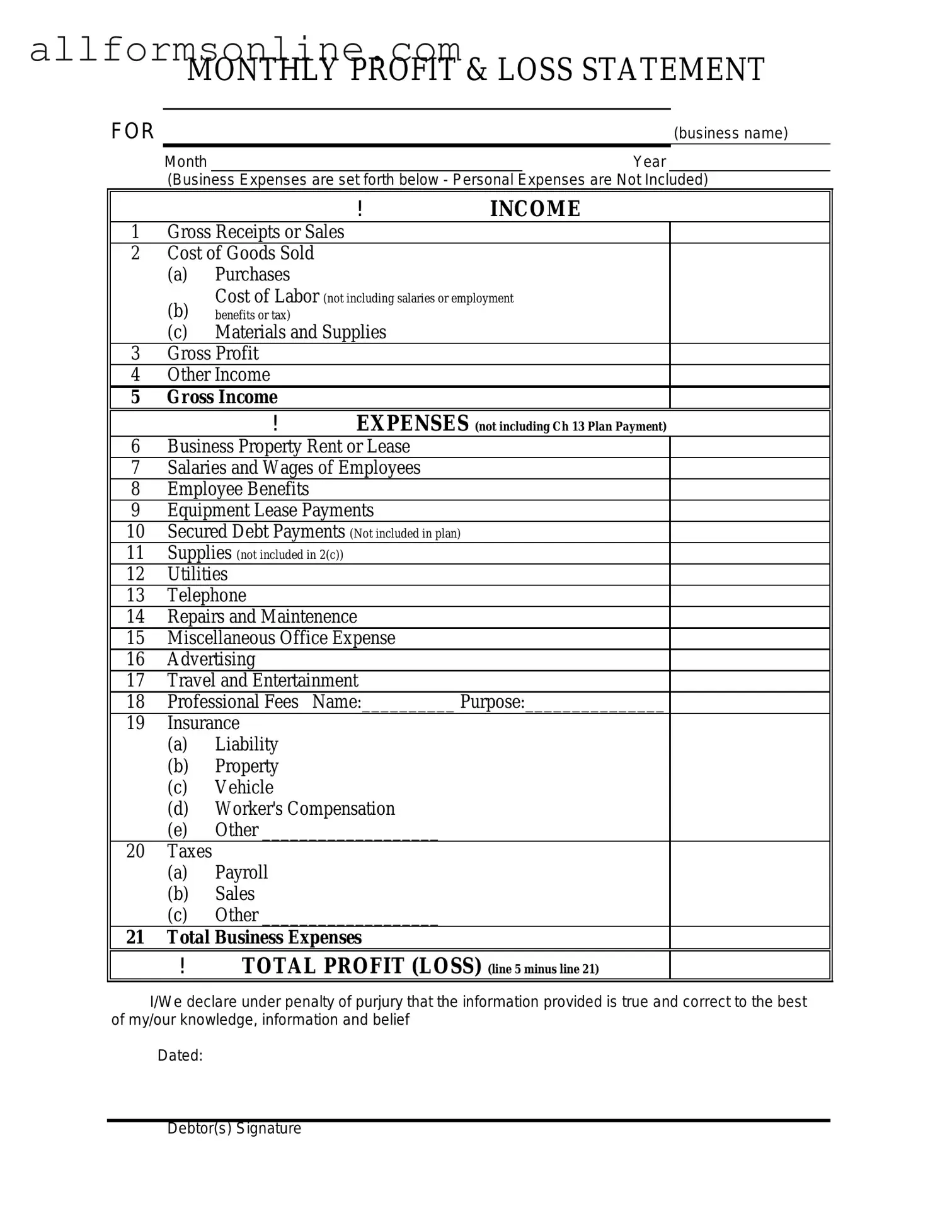What is a Profit and Loss form?
A Profit and Loss form, often referred to as a P&L statement, is a financial document that summarizes the revenues, costs, and expenses incurred during a specific period, usually a fiscal quarter or year. This form provides a clear picture of a business's financial performance, allowing stakeholders to assess profitability. By comparing revenues against expenses, it helps in understanding whether the business is making a profit or incurring a loss.
Why is the Profit and Loss form important for businesses?
The Profit and Loss form is crucial for several reasons. First, it enables business owners to track income and expenses, which is vital for making informed financial decisions. Second, it serves as a tool for investors and lenders to evaluate the financial health of a business. Lastly, it aids in tax preparation by providing necessary information about income and deductible expenses, ensuring compliance with tax regulations.
How often should a Profit and Loss form be prepared?
The frequency of preparing a Profit and Loss form can vary based on the size and nature of the business. Many small businesses choose to prepare this statement monthly or quarterly, which allows for timely insights into financial performance. Larger companies may prepare it quarterly or annually. Regardless of the frequency, regular updates can help in identifying trends and making necessary adjustments to improve profitability.
What key components should be included in a Profit and Loss form?
A comprehensive Profit and Loss form typically includes several key components. First, it should list total revenue or sales, followed by the cost of goods sold (COGS), which gives insight into direct costs associated with producing goods. Next, operating expenses, such as salaries, rent, and utilities, should be detailed. After calculating gross profit and subtracting operating expenses, the form should reflect net profit or loss. Additionally, other income and expenses, such as interest or taxes, may also be included for a complete financial overview.
